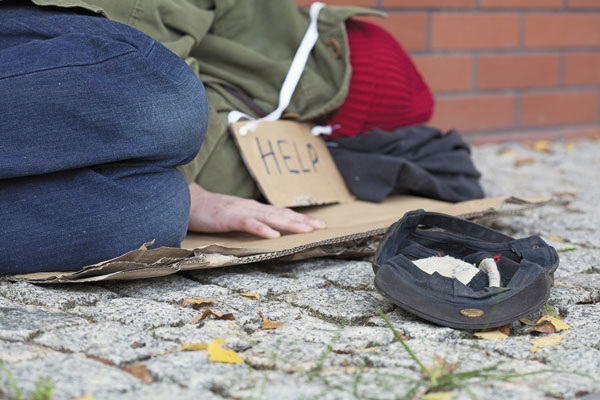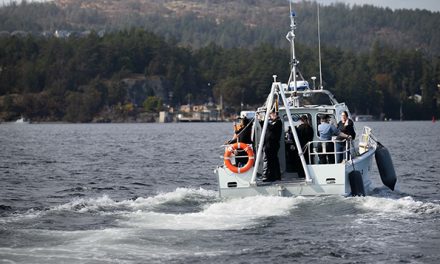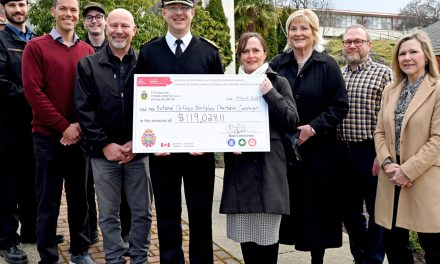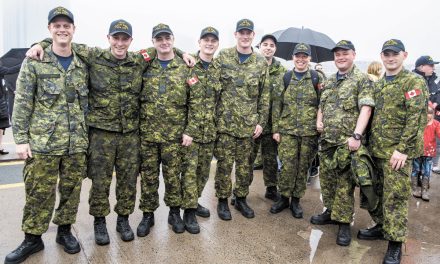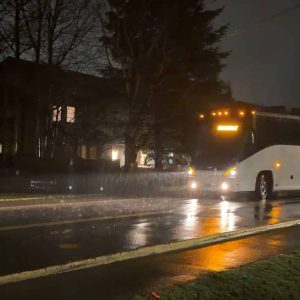
Help continues for homeless Veterans
Peter Mallett, Staff writer ~
Front line volunteers working to get Victoria’s homeless veterans off the streets are applauding a recent policy switch by the new federal government.
Along with plans by the Liberal government to reopen nine Veterans Affairs Canada (VAC) regional offices, hire 400 additional staff, and create two centres of excellence, including one specializing in mental health, PTSD, and related issues, there is also a pledge by the VAC’s new minister Kent Hehr to tackle the “unacceptable” problem of homelessness amongst veterans.
“We are developing a homelessness strategy in collaboration with partners and stakeholders that will identify gaps in existing policies and programs, and will propose evidence-based mechanisms that will focus on the elimination of veteran homelessness,” Hehr said in a statement. “Area offices are strengthening partnerships with community organizations across the country and coordinating efforts to identify homeless veterans, and use the community housing and support services to help them.”
Employment and Social Development Canada recently released a report that paints a picture of the state of homelessness among veterans. It states that 2,250 former CAF personnel account for 2.7 per cent of nation’s homeless population of 150,000. The study surveyed occupants at 60 homeless shelters across Canada and found that 16 per cent of female veterans reported being homeless on more than one occasion, and the average age for homeless veterans staying at shelters is 52, compared with an overall average of age of 37.
Canada’s Chief of Defence Staff, Gen Jonathan Vance, was equally concerned with the report’s findings, stating, “It’s shocking in Canada that we would have a veteran who is homeless, but it is a sad reality.”
Angus Stanfield is the Royal Canadian Legion’s Yukon/B.C. Command president and founding director of Cockrell House, a group that helps homeless veterans.
He says the problem of homeless veterans is not going away and seems to be getting worse.
“I’m glad there is more public awareness, interest and perhaps the political will to start addressing this. I’m looking forward to meeting with the new minister and government when they visit Victoria,” he adds.
Founded in 2007, Cockrell House in Colwood was the first of its kind in Canada. It helps at-risk veterans stay off the street by offering them permanent housing and essentials such as furniture, bedding, food, bus passes and access to social programs. However, they only have room for 11.
The VAC’s outreach program works with 200 community groups in 50 cities, such as Veterans Emergency Transition Services (VETS), a non-profit charity based in Halifax that assists homeless veterans across Canada.
“I’m excited about the new policy direction and think it’s a good sign because we now have hope,” said VETS president and founder Jim Lowther. “I think they [the government] will be able to carry out their goals if they utilize organizations like ours, and other service providers who deal with homelessness for in-crisis veterans.”
During a 15-year military career, Lowther completed deployments on Operation Palladium and Operation Apollo, and suffers from a traumatic brain injury. Lowther says he has first-hand experience of how the cycle of homelessness starts, and also how to stop it in its tracks.
“There are various reasons why the downward spiral starts and veterans end up in shelters,” he says. “I was lost when I got out of the service, but thankfully I had a supportive and loving family who were there for me. Many others aren’t so lucky when things start going bad.”
Lowther says his group offers a “proven blueprint” for helping homeless veterans find permanent apartments, noting since they were founded in 2010 VETS has helped more than 800 former military members.
Stanfield and Lowther both say homelessness amongst veterans normally occurs within the first 10 years following the end of their military service, and that the latest wave of homeless Afghanistan war veterans has yet to crest. They added that since the study was taken at homeless shelters, it doesn’t account for the many veterans who often refuse to seek help and more typically “want to be left alone.”
They both indicated the number of homeless veterans was closer to 20,000 or about eight to 10 per cent of the homeless population.
Stanfield says his group has encountered several veterans who prefer to camp in the bush rather than seek assistance at a shelter, including two men that Cockrell House is assisting that live in the bush on the north end of Vancouver Island.
Stanfield concluded that just getting a homeless veteran to agree they need help and getting them off the street are the first and most important steps to breaking the cycle of homelessness.
“When we get them together at Cockrell House they bond with each other and find out there is someone who can understand and listen to their concerns,” he said. “To people that haven’t served in the military, it’s a bond they can’t truly understand.”

